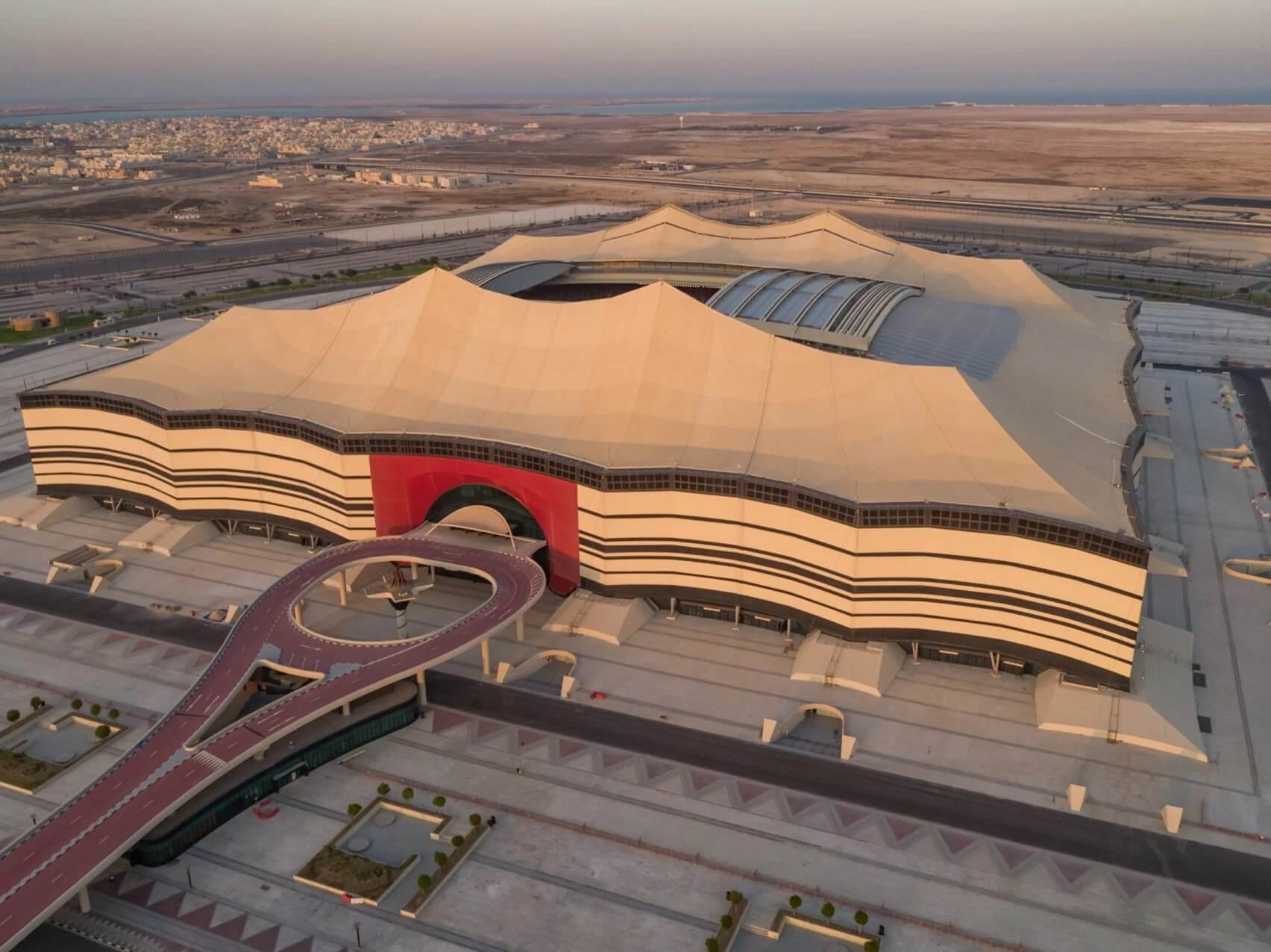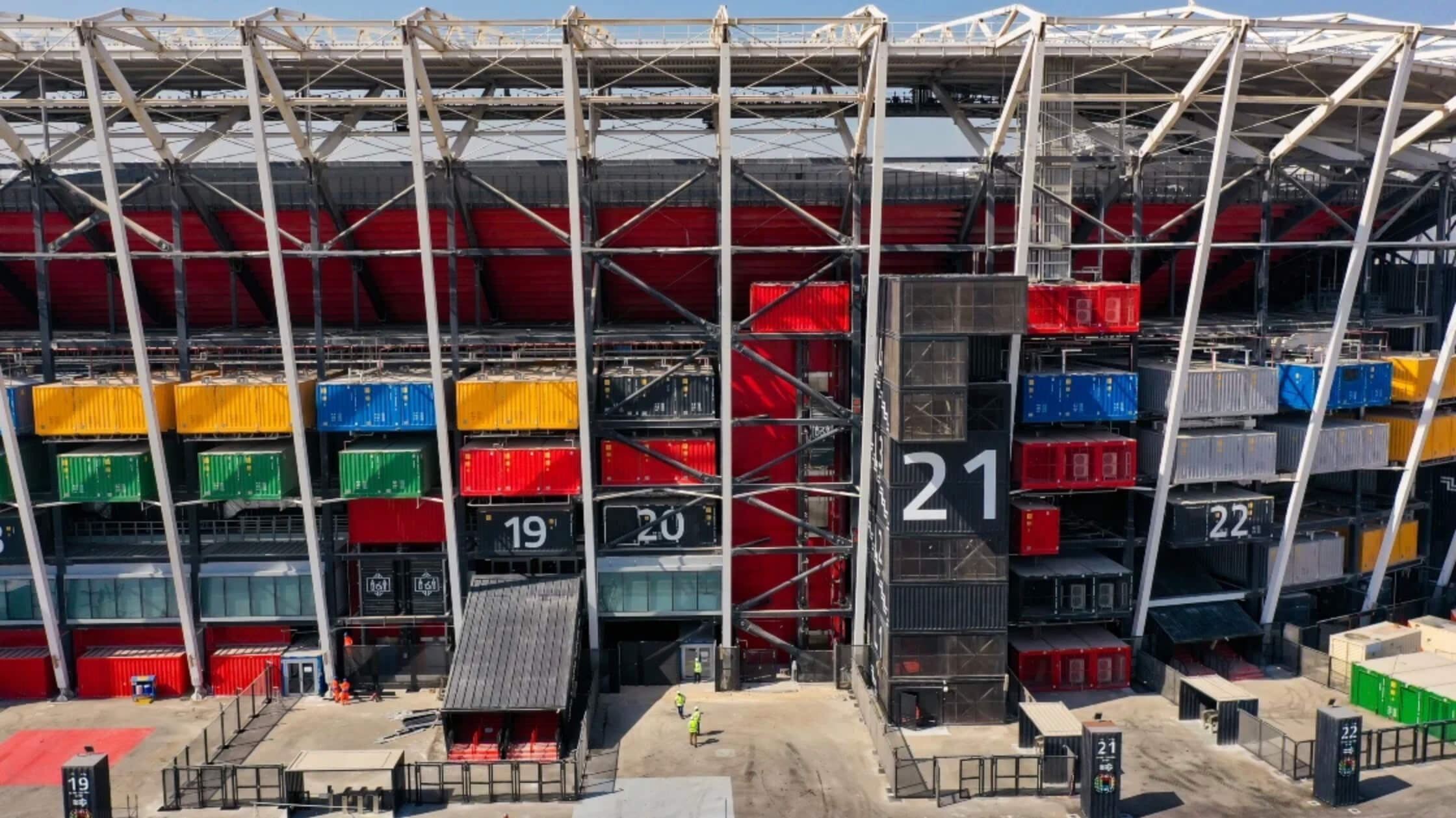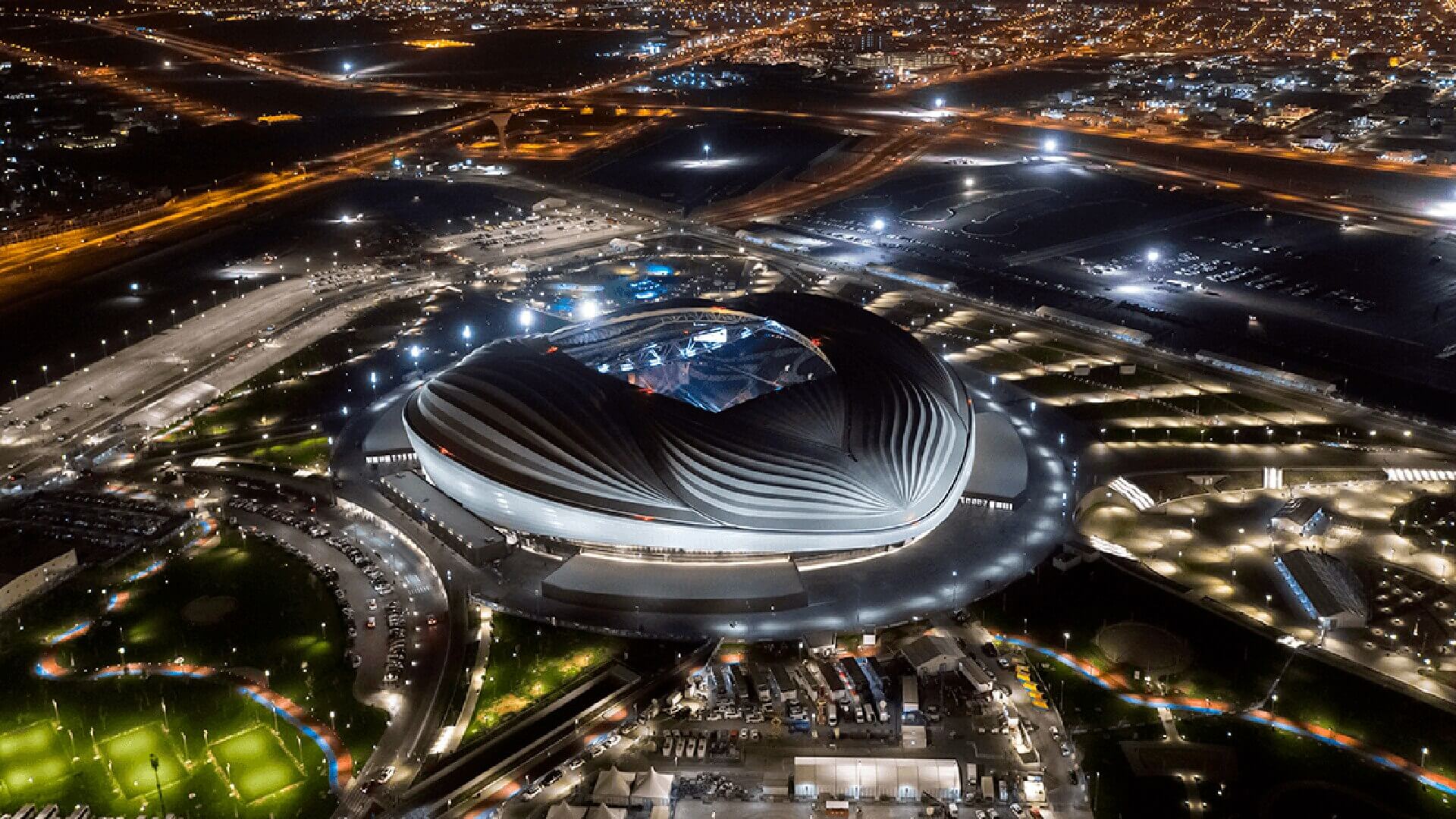The Doha-based Supreme Committee for Delivery and Legacy, the body charged with overseeing all construction and infrastructure projects for 2022 FIFA World Cup host country Qatar, has now inaugurated seven of the eight stadiums for the quadrennial international men’s football championship set to literally kick off in the peninsular Persian Gulf country next November.
While construction has concluded on all eight stadiums that have been newly built or renovated for the tournament, the only venue left to be formally unveiled by Qatar as of December 6 is the Foster + Partners- and Populous-designed Lusail Iconic Stadium. That stadium, by far the largest of the bunch with an 80,000-person capacity, is located just north of Doha in the planned city of Lusail and will host the final match of Qatar 2022.
The two most recent stadiums to be inaugurated late last month, coinciding with the launch of FIFA Arab Cup 2021, include Al Bayt Stadium, which was designed by Beirut-headquartered global firm Dar Al-Handasah to evoke the traditional bayt-al sha’ar tents used by nomadic people across the Gulf region. Located in the coastal city of Al Khor in northern Qatar, it is the second-largest Qatar 2022 stadium, with a 60,000-person capacity and will host a total of nine matches during the nearly month-long tournament including the opener on November 21, 2022. (It is hosting a total of five matches during the FIFA Arab Cup 2021 including the closing match.)

Also recently inaugurated is a structure that stands as the most singular of the octet of Qatar 2022 venues: Stadium 974. Previously known as Ras Abu Aboud Stadium (the name of the industrial district near Hamad International Airport where it is located), the 40,000-capacity venue has been generating headlines ever since it was first announced in 2017 for its unique modular design that incorporates 974 recycled shipping containers. In addition to referencing the exact number of shipping containers used in its construction, Stadium 974’s name is also a direct nod to Qatar’s international dialing code. Designed by Madrid-based Fenwick Iribarren Architects as the first-ever fully dismountable stadium in FIFA World Cup history, the ephemeral waterfront venue will host a total of seven matches during Qatar 2022. Construction work kicked off on the project located at a roughly 484,000-square-foot site formerly owned by QatarEnergy (née Qatar Petroleum) in 2018.
In a recent Q&A published by the Supreme Committee for Legacy & Delivery, Mohammed Al Mulla, precinct director of Stadium 974, noted that the venue will be the “first stadium fans see when they arrive in Qatar,” due to its close location near Doha Part and both Doha Airport and the newer Hamad International Airport. “In more ways than one, it can be regarded as a gateway to the country,” he said.
The stadium is also convenient to a major waterfront esplanade as well as public transit with the nearest Doha Metro station being roughly a half-mile away.
“Our original idea was actually inspired by a Lego set and we eventually decided to use shipping containers and recycled steel for the stadium,” added Al Mulla. ”These elements can both be recycled after the tournament if necessary.”

As the first-for-FIFA work of cargotecture that doubles as an homage to Qatar’s maritime prowess, Stadium 947 also, as Al Mulla explained, takes full climatic advantage of its strategic location opposite the Old Doha Port. Because it is perched directly on Doha Bay and is specifically designed to harness breezes coming off the water, the stadium will benefit from a natural cooling and ventilation system and is the only one of the eight Qatar 2022 stadiums designed and built without mechanical cooling technology. When the stadium, which also features “dazzling” views of Doha’s supertall tower-studded West Bay skyline per local tournament organizers, is dissembled post-tournament, the site will be transformed into a “verdant waterfront development” and the different major components of the venue including its modular seating, roof, and the containers themselves will be given new uses.
In addition to Al Bayt Stadium, Stadium 974, and the yet-to-be-formally-unveiled Lusail Iconic Stadium, the five other completed FIFA World Cup 2022 venues are:
- Located in Doha proper, Al-Thumama Stadiumh is a 40,000-person capacity that opened in October of this year. It was designed locally by Ibrahim M. Jaidah of the Arab Engineering Bureau.
- The 45,350-capacity Education City Stadium opened in February 2020 in the inland city of Al Rayyan. It was designed by Fenwick Iribarren Architects along with London-headquartered Pattern Design (now known as BDP Pattern following BDP’s acquisition of the stadia-specializing firm earlier this year).
- Ahmed bin Ali Stadium, also located in Al Rayyan, replaces an existing stadium at the site that was demolished in 2015 to make way for a larger, 44,740-capacity facility. It was designed by Pattern Design.
- Khalifa International Stadium, a 45,000-plus-person capacity stadium originally built in 1976 as part of Al Wakrah’s Doha Sports City complex, underwent an extensive renovation led by Dar Al-Handasah that concluded in 2017. It was the first Qatar 2022 stadium to be completed.
- And, last but not least, is Zaha Hadid Architects’ neo-futuristic Al-Janoub Stadium, a 40,000-capacity venue with a nautical form inspired by traditional Dhow boats. Topped by a soaring retractable roof made from pleated PTFE panels, the controversy-embroiled Al-Janoub Stadium opened in 2019 in Al Wakrah as Qatar 2022’s second-completed stadium behind the revamped Khalifa International Stadium.
Following the conclusion of the 2022 FIFA World Cup, most of the stadiums (save for Stadium 974, which will be deconstructed entirely) will be significantly scaled back in terms of capacity ; Qatar has pledged to donate obsolete modular seating to developing countries to help them in building out sporting infrastructure.

Long subject to criticism from human rights organizations including Amnesty International over inhumane and frequently perilous conditions that have resulted in the deaths of a reported 6,500 migrant workers ahead of Qatar 2022, the Qatari government adopted new labor reforms beginning in 2014 (four years after the country won the bid to host the tournament amid an outburst of controversy) to better safeguard and compensate workers, including the introduction of a minimum wage.
The Qatari government and tournament organizers have categorically denied reports that the number of deaths among workers building the stadiums and other major projects ahead of Qatar 2022 is in the thousands; the Supreme Committee for Delivery & Legacy has stated that the number is dramatically less, claiming that there have been just 38 worker deaths since 2015 and 34 of them have been classified as “non-work related.” In addition to the new and renovated stadiums, Qatar has reportedly spent $200 billion in large-scale infrastructural improvements across the country, many of which were planned before—but have been accelerated by—the selection of the country as 2022 FIFA World Cup host.
Despite the reforms, the Qatari government remains under intense scrutiny for its alleged abuse and exploitation of migrant workers as well as for allegations of bribery and corruption.
Tournament organizers anticipate that 1.5 million fans, roughly half the number of Qatar’s total population, will visit the tiny country for the 2022 FIFA World Cup.











